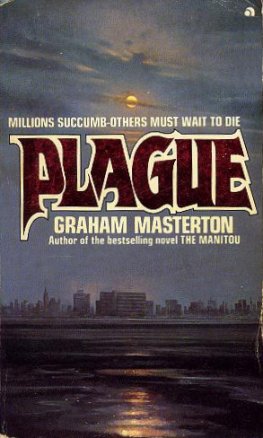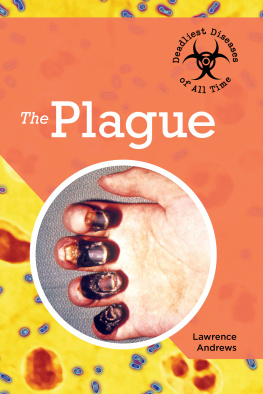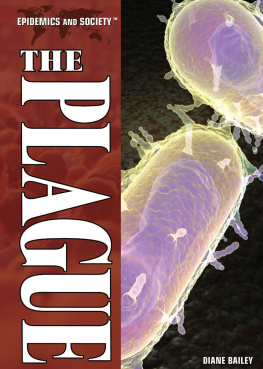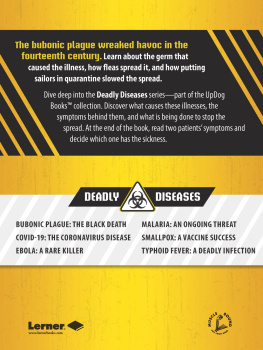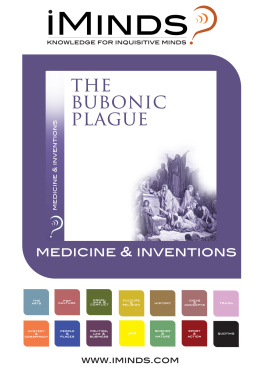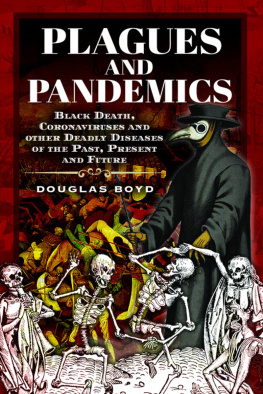Thank you for buying this ebook, published by NYU Press.
Sign up for our e-newsletters to receive information about forthcoming books, special discounts, and more!
Sign Up!
About NYU Press
A publisher of original scholarship since its founding in 1916, New York University Press Produces more than 100 new books each year, with a backlist of 3,000 titles in print. Working across the humanities and social sciences, NYU Press has award-winning lists in sociology, law, cultural and American studies, religion, American history, anthropology, politics, criminology, media and communication, literary studies, and psychology.
Plague Ports
Plague Ports
The Global Urban Impact of Bubonic Plague, 18941901
Myron Echenberg
NEW YORK UNIVERSITY PRESS
New York and London
www.nyupress.org
2007 by New York University
All rights reserved
Library of Congress Cataloging-in-Publication Data
Echenberg, Myron J.
Plague Ports: The global urban impact of bubonic plague,
18941901 /
Myron Echenberg.
p. cm.
Includes bibliographical references (p. ) and index.
ISBN-13: 978-0-8147-2232-9 (cloth : alk. paper)
ISBN-10: 0-8147-2232-6 (cloth : alk. paper)
1. PlagueHistory. I. Title.
RA644.P7E34 2007
614.5732dc22 2006022748
New York University Press books are printed on acid-free paper,
and their binding materials are chosen for strength and durability.
Manufactured in the United States of America
c 10 9 8 7 6 5 4 3 2 1
For my granddaughters Katya Patricia
and Siena Eliane
Contents
Acknowledgments
I am grateful for grants from the Social Sciences and Humanities Council of Canada, and from the Hannah Institute for the History of Medicine, which have facilitated the overseas research. It is a great pleasure to thank the many people who helped me with this book, and I apologize especially to those whose names I have forgotten to mention. My research assistants over almost a decade included Tolly Bradford, Jessica Cowan-Dewar, Sharif Elshafei, Zakyi Ibrahim, Yan Lu, Maureen Malowany, Melissa Melvin, Nick Pelafas, Ismail Rashid, Karen Robert, and Mariana Woisky. Mentors, colleagues, and friends at McGill University and elsewhere who have provided inspiration and guidance are Alan Adamson, Evine Al-Khadem, Pierre Boulle, Alberto Cambrosio, Larry Conrad, Philip Curtin, Elizabeth Elbourne, Mark Harrison, Lotte Hughes, Catherine LeGrand, Stanley Lemon, Brian Lewis, Margaret Lock, Evelyn Lyons, Patrick Manning, Edna Robertson, Ronald Sklar, Nancy Stepan, Michael Szonyi, Maria Luisa Teixeira, Bruce Trigger, Faith Wallis, George Weisz, Alan Young, and Brian Young.
I am happy to acknowledge the assistance and hospitality of the following scholars, archivists, and librarians: for Hong Kong, Chi-chueng Choi, Patrick Hase, Kate Lowe, Kerrie MacPherson, Elizabeth Sinn, and Anita Wilson; for Bombay, Mark Harrison, and Sunita Puri for allowing me access to her unpublished masters research paper; for Alexandria, Antoine and Marie Ashba, Mohamed Fouad Mohamed Awad, Michael Reimer, and Susan and Sheldon Watts; for Porto, Maria Jose Vaz Dias and Jos Manuel Correia da Costa; for Buenos Aires, Ezequiel Gallo, Jorge F. Liernur, and Eduardo A. Zimmermann; for Brazil, Henrique Moises Canter, Geraldo G. Serra, and Kenneth Camargo; for Honolulu, Jerry Bentley and Nancy Morris; for San Francisco, Dean Echenberg, Gladys Hansen, and Charles McClain; for Sydney, Peter Curson; and for Cape Town, Howard Phillips and Elizabeth Van Heyningen.
My thanks to Erica Wood for arranging the photographic permissions; to Ingrid Stockbauer for the maps; to the industrious and patient interlibrary loan staff of the McLennan Library, McGill University; and to the people at New York University Press, my colleague and editor of this series Andrea Tone, Eric Zinner, Emily Park, and Despina Papazoglou Gimbel, and the anonymous reader for thoughtful suggestions.
Never least but often last in these lists are members of my loving family, headed by that remarkable woman whom I had the good sense and good fortune to marry, Eva Neisser Echenberg.
Preface
Lasting from roughly 1894 to 1950, the third bubonic plague pandemic took at least 15 million lives. This comparative study focuses on ten diverse seaports on five continents during the initial years of this global medical disaster. The port cities are arranged in pairs corresponding to geography and, as much as possible, the chronological sequence of the plague visitations. deals with plague in two of Britains Southern Hemisphere ports, Sydney (1900) and Cape Town (1901).
The introduction in addresses a final question: What lessons might be learned as new pandemics threaten global public health at the dawn of the twenty-first century?
The main concern of this study is the comparative global impact of plague on urban residents and the responses of the general population, the press and print media, the politicians, and the medical and public health authorities. These issues already have been discussed for some of the cities in this study, but here I am rather ambitiously examining the commonalities and differences of the various urban responses. Many variables were at issue: the strength of the outbreak, the control measures imposed, how the purposes of the controls were communicated to the public, the attitudes of medical and political authorities, and the cultural and historical precedents for dealing with severe epidemics. Two profound tensions informed the history of this pandemic. First, the global spread of plague coincided with an era of Western cultural imperialism. In Hong Kong, Bombay, and Alexandria, a new Western biomedicine confronted the older Confucian, Buddhist, Ayurvedic, and Islamic medical approaches to infectious disease. Second, in cities such as Porto, Buenos Aires, Rio de Janeiro, and San Francisco, tensions emerged from two strands of Western medicine, the older sanitarian versus the newer bacteriological approach.
Today most of the ports included in this study conjure up exciting images of the exotic and the beautifulpalm trees, golden sunsets, and girls from Ipanema, as the song about Rios most famous beach runs. Even Bombays image of overcrowding and squalor is today offset by the lifestyles of Bollywood, where Indias beautiful film people reside. A century ago, the pictures were different. Each port had experienced the benefits and the problems associated with the enormous expansion of world trade, immigration, and industrialization that marked the nineteenth century. Each city had its modernists and civic boosters, and each its overcrowded tenement dwellers, many of them recent migrants crammed into grim living spaces.
The cities and towns in this book were not the only ones touched by the third pandemic of bubonic plague. Other significant epidemics broke out in Taiwan (1896), in Kobe, Japan (1898), in Manila (1900), in Mazatln, Mexico (1902), in Lima (1903), in Accra, Ghana (1908), and in Shanghai (1908). Minor outbreaks also occurred in Glasgow (1900 and 1901), Paris (1917), and Los Angeles (1924). To conduct a large comparative study like this one, I had to make a selection, and the languages and quality of the sources involved helped me decide. For documentation, I relied on contemporary newspapers and published medical reports in Western languages, with one or two exceptions. Also important were plague, health, and urban studies by secondary authorities. What I have not done is primary research in government archives, a task that would have made a major comparative project like this one interminable. Only for Buenos Aires and Rio do I believe this to be a difficulty. For these cities, I hope this book will stimulate others to take up such an investigation.


